Edison lamp

The first electric incandescent lamps were invented in the 19th century. Even now, they help to create a special atmosphere and transform the interior of any home. Reliable lighting devices not only serve as decor, but also do a good job with their main task - to illuminate the space. Let's talk about how to choose and use Edison bulbs and show you how to add even more comfort to your home with them.
The history of the light bulb
An incandescent light bulb is the oldest electric bulb still used in everyday life. Its practical form was invented simultaneously in 1879 by Sir Joseph Swan in England and Thomas Edison in America. Over the past 130 years, it has undergone numerous changes in materials and production.
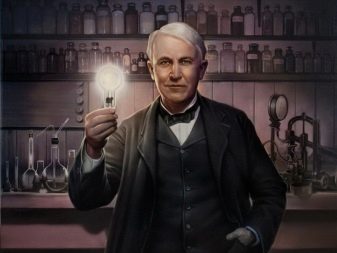

Electric light was not the first invention of Thomas Edison, nor was he the first to create an alternative to gas light. Electric lights already existed as street lighting. In 1879, Edison tested his first light bulb. Although he did not come up with the whole concept, his light bulb was the first to be practical and affordable for home lighting.

Thomas chose a thread that was durable but inexpensive, and a team at the Edison Invention Factory in Menlo Park, New Jersey tested over 6,000 possible materials before opting for carbonated bamboo.
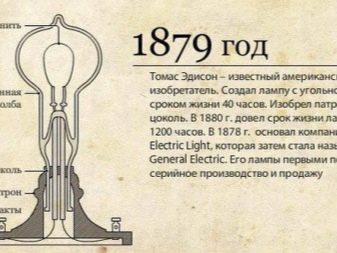
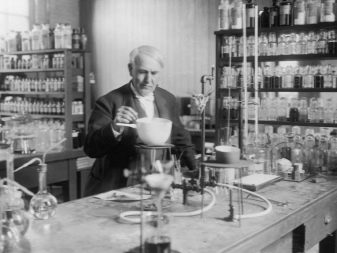

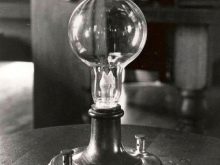
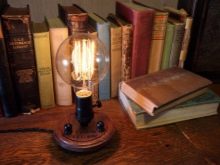
During its existence, the light bulb has undergone the following changes:
- 1906 General Electric pioneered the method of making tungsten filaments for use in incandescent lamps. Edison himself knew that tungsten would ultimately prove to be the best choice for filaments in incandescent lamps, but at one time the machines needed to make wire in such a beautiful shape were not available.
- 1910 - William David Coolidge of General Electric improves the manufacturing process to produce the longest-lasting tungsten filaments.
- 1920s - The first matt lamp is produced, high beam bulbs for car headlights and neon lights are adjusted.
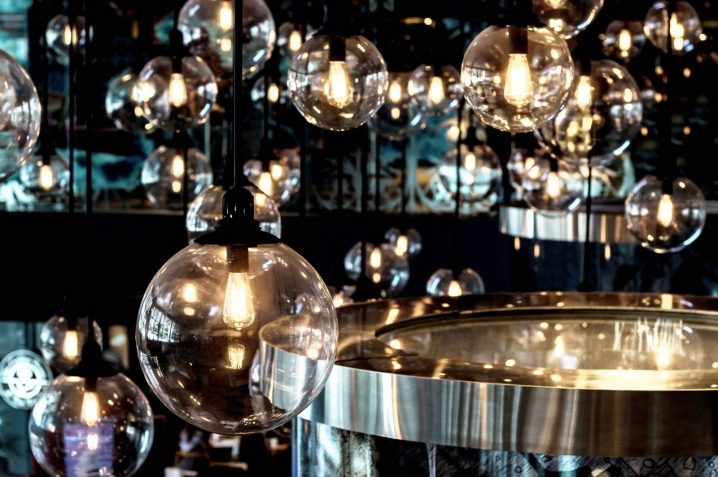
- 1930s - invented small disposable lamps for photography and a fluorescent tanning lamp.
- 1940s - the first "soft light" incandescent lamps appeared.
- 1950s - quartz glass and halogen bulb are produced.
- 1980s - new low-power metal halides have been created.
- 1990s - debut of long lamps and compact fluorescent lamps.
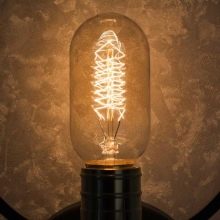
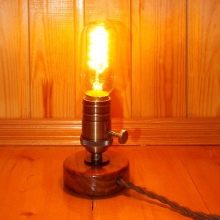
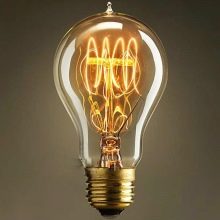
Modern incandescent lamps are not energy efficient - less than 10% of the electricity supplied to a lamp is converted into visible light. The remaining energy is lost as heat. However, these inefficient light bulbs are still widely used today due to their many advantages.
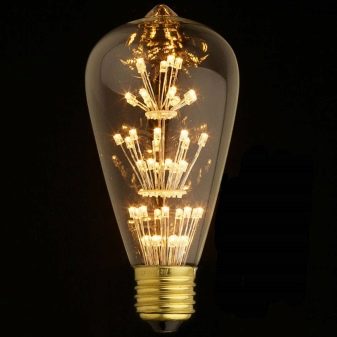
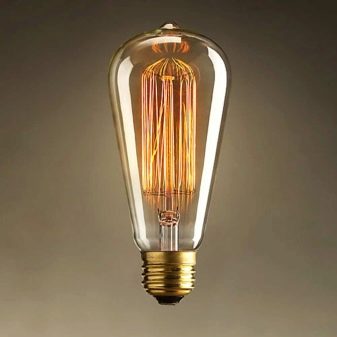
The legislation of many countries, including Russia, provides for the phasing out of the use of energy-saving options such as compact fluorescent lamps and LED lamps. This is due to the lower cost of incandescent bulbs, the ability to obtain instant light and problems with mercury pollution.
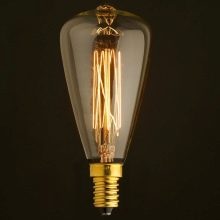
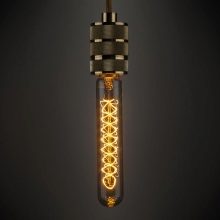

Features, advantages and disadvantages
Until recently, the incandescent light bulb was in nearly every home, despite being the least efficient technology for converting electrical energy into visible light.Recently, several significantly more efficient modified models have been developed, but until 2010 it still held the record for the number of units produced and sold.
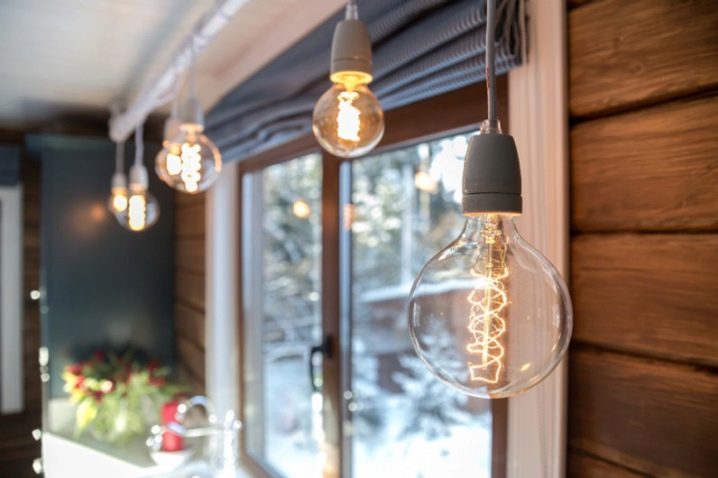
Perhaps the secret to the popularity of the product with consumers is that no other light source has shown strong enough technical characteristics to be able to really oust a proven competitor from the market.

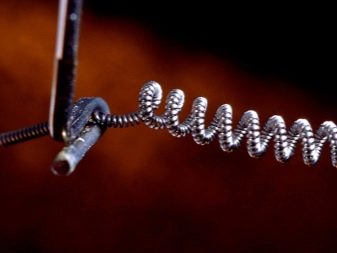
The tungsten filament of the spiral coil is the heart of the lamp, and this is where the light is created. It is supported at two intermediate points with a thin molybdenum wire, which provides the required refractory properties. The electrical current is carried by a pair of nickel-plated steel lead wires into which the filament tails are clamped. One of these outer wires contains a safety wire section, often with glass sleeves, filled with small glass beads.
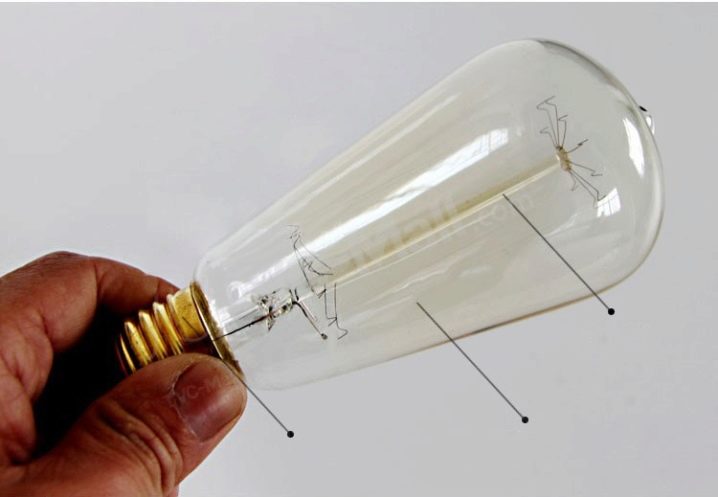
The cap is attached to the flask with a special thermosetting cement, the copper wires pass through the holes at the end of the cap, where they are soldered to the brass contact plates. The terminals are insulated from each other with a special black glass, which ensures high electrical resistance even at elevated temperatures.
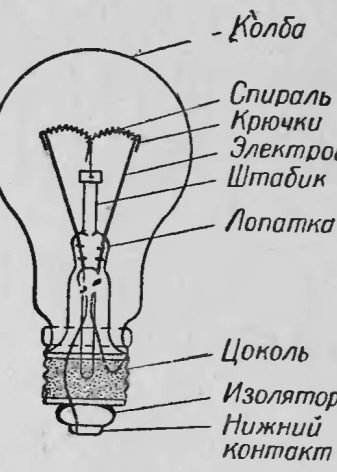
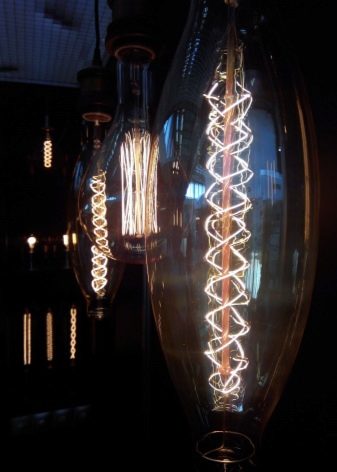
Compared to other light sources, incandescent lamps have the lowest luminous efficiency. Technological progress, in terms of luminous efficiency, is compared to other light sources. But they have many other advantages.

The advantages of these lighting fixtures are listed below:
- produce a warmer color compared to fluorescent lamps;
- generate relatively high light output;
- they are easy to install and replace;
- a wide range of shapes and sizes;

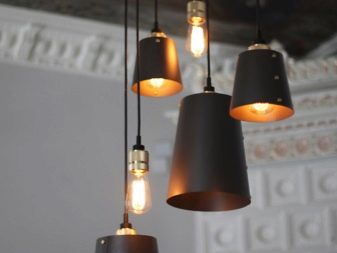
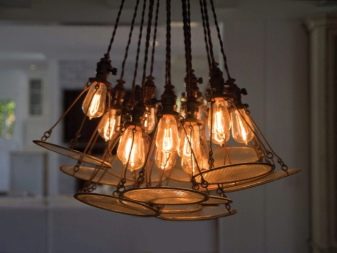
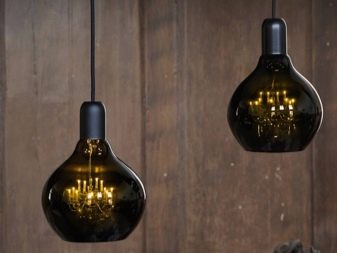
- wide range of applications;
- work directly from the mains without any requirements for a transformer or ballast;
- offer an ideal color rendering index - 100;
- their brightness is adjustable;
- low cost and availability for sale.
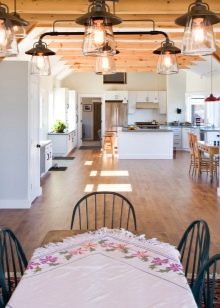
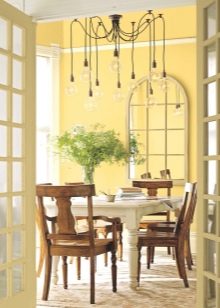

The main advantage of using incandescent bulbs is that they are ubiquitous. In areas that more modern types of lighting cannot use, such models are readily available. Some models shine up to 4000 hours and are used both inside and outside buildings. Products instantly light up when turned on. Many other types of products, such as sodium light sources, take up to 10 minutes to ignite.
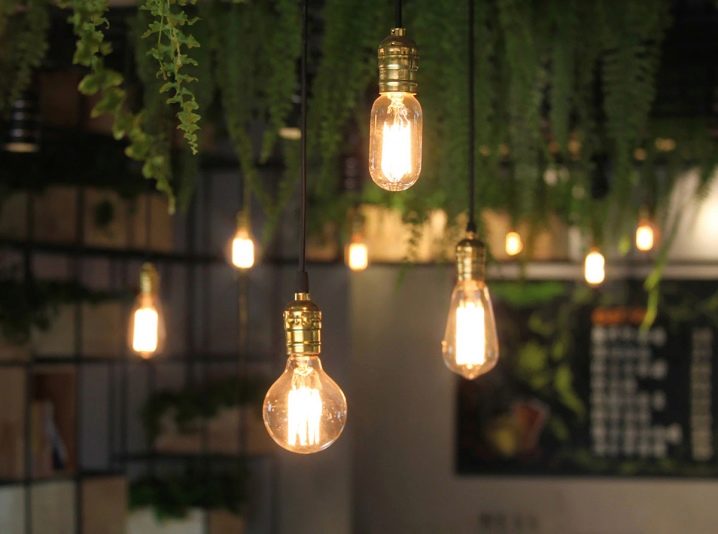
Edison bulbs provide excellent color rendering and warm, inviting light. This type of lighting can be easily dimmed, a feature many homeowners use to add mystique and elegance to their décor.
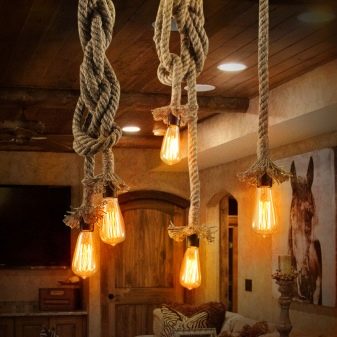
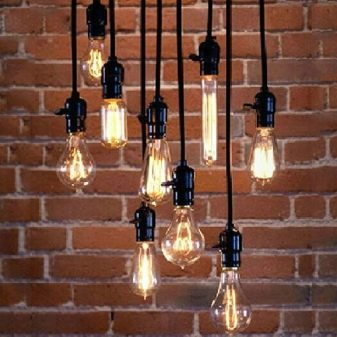
In addition to the advantages, Edison bulbs also have disadvantages:
- short service life of about 1000 hours;
- require air conditioning to cool the room;
- have higher operating costs;
- fragility;
- produce 5 to 20 lumens per watt. This indicates low efficiency.
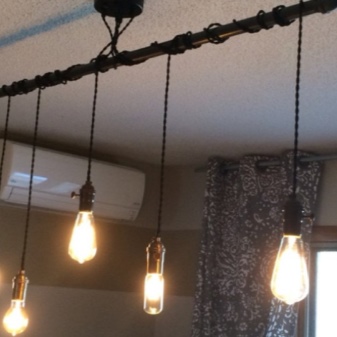
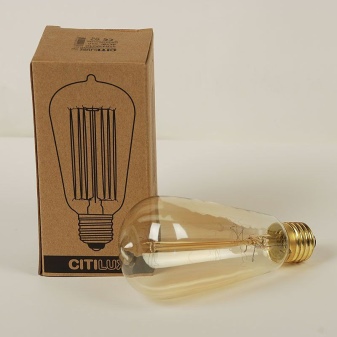
Characteristic
There are three common types of incandescent bulbs used in residential areas:
- standard pear-shaped models;
- energy saving or halogen;
- reflective or parabolic reflector (PAR) lamps, sometimes called "spot"
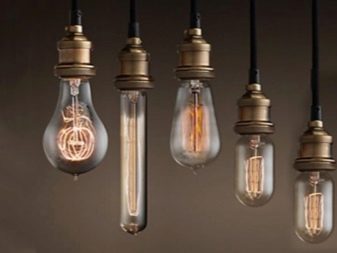
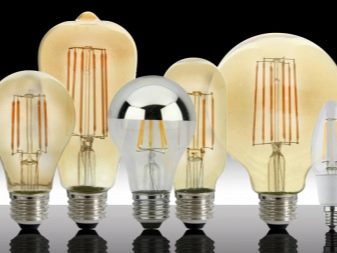
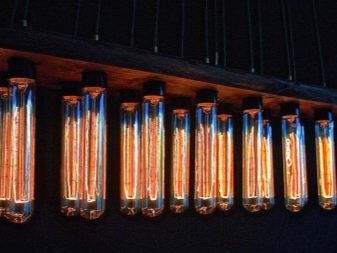
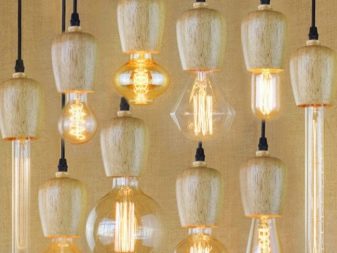
Special characteristics of LED and diode lamps:
- LEDs usually do not burn out, but the strength of the light decreases over a period of time. This feature is called lumen decolorization. The lifetime of an LED product is based on the duration at which the luminous intensity is reduced by more than 30% of its original intensity.
- LED lighting works on constant current sources. When AC sources are used, special circuitry is required to convert it to DC.
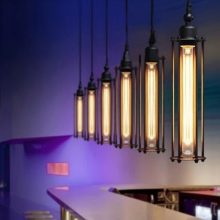
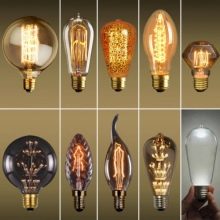

- The heat generated by the LEDs must be dissipated from the LEDs. In LED products, a heat sink is used to absorb heat generated and emitted to the environment.
- LED bulbs take no time to warm up: they reach full brightness without any delay, unlike most fluorescent fixtures. But the light output is less powerful compared to other types of lighting, and therefore multiple LEDs are used together to form a single light source.

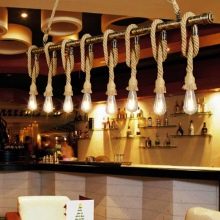

Decorative incandescent bulbs create light by resisting electricity through a thin filament, which causes them to heat up during use. Most incandescent bulbs use tungsten as their filament element. Tungsten is an inexpensive metal that has a long filament life. This is a suitable option because it has an extremely high melting point and is flexible.

Film-like tungsten filaments are easy to form and hold well at high temperatures. Incandescent bulbs also contain other elements such as argon and nitrogen in gaseous states.
Sizes and shapes
Modern light bulbs can be used in a variety of luminaires, and each luminaire has its own specific requirements for the size and shape of the lamp it is compatible with. The next time you go shopping for a new light bulb for your fixture, you will know what you are looking for.
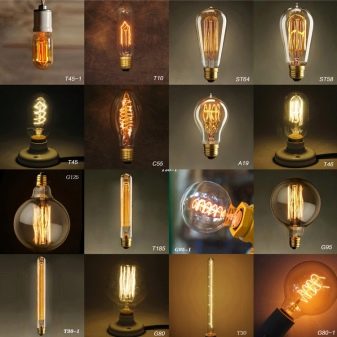
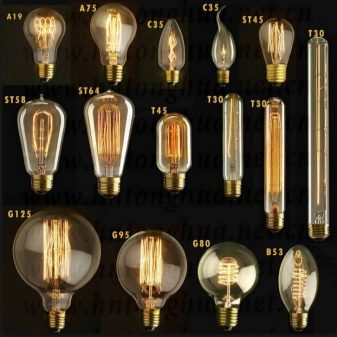
Basic designations:
- A - standard household incandescent lamp (widely used for home lighting, universal);
- B - in the form of a bullet tip;
- BT - convex or blown tubular shape;
- BR - short reflective bulb;
- C - candle or cone shape;
- CP is the crystalline form of the flask;
- E - ellipsoidal shape;
- ER - elongated reflective bulb;
- F is a flame-style chandelier bulb shape;
- G - spherical product;
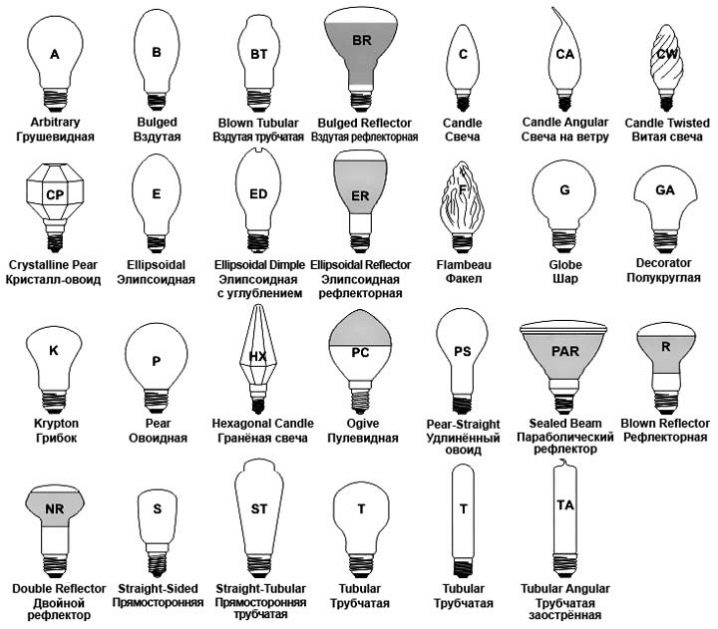
- HK - hexagonal candlestick;
- K - narrow reflective bulb;
- MB - halogen lamp;
- MR - product with quartz reflector (low power);
- P is the shape of the pear cap;
- PAR - shape of a parabolic aluminum reflector;
- PS - elongated standard shape;
- R is a reflective bulb.
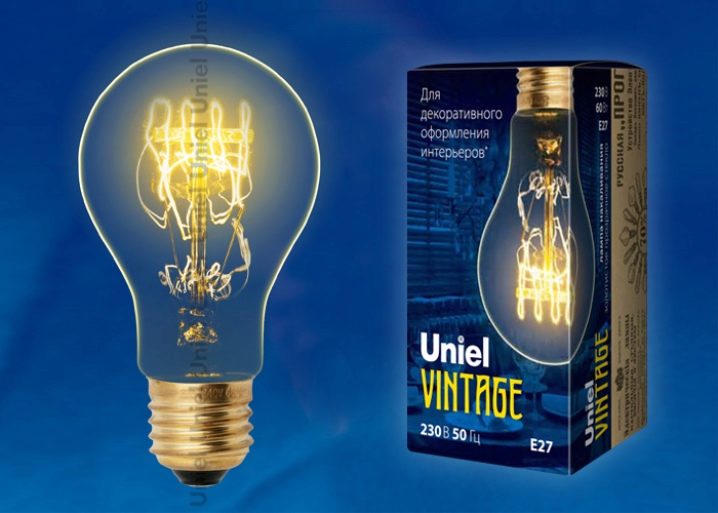
However, only three of all the forms are widely used for everyday purposes, namely:
- A-shaped bulbs. Form for household lighting. Standard sizes are A19 and A60. The letter indicates the shape of the bulb, the number following it is the diameter of the bulb. For example, a light bulb A-19 means that it is of type “A”, and its diameter is 7.3 cm.
- B and C-shaped bulbs. Bulbs with this shape have a convex base that relaxes to a rounded tip. C-shaped bulbs are very similar to holiday bulbs. Bulbs of this shape are very common in chandeliers, night lights and other lamps that do not require high power.
- PAR-shaped bulbs. PAR bulbs use a parabolic mirror that focuses all the light. For LEDs, the PAR designation is used as a definition of the shape, since most of them do not have a reflective bottom surface.


In terms of diameter and length, the classification is much simpler. Classification of basic diameters:
- 8 = 2.54 cm;
- 11 = 3.49 cm;
- 16 = 5 cm;
- 20 = 2.5 inches;
- 30 = 6.35 cm;
- 38 = 12.065 cm.
In terms of length, bulbs are divided into S (short) and L (long) categories, but it is not always possible to see the length indicator mentioned in the product description.
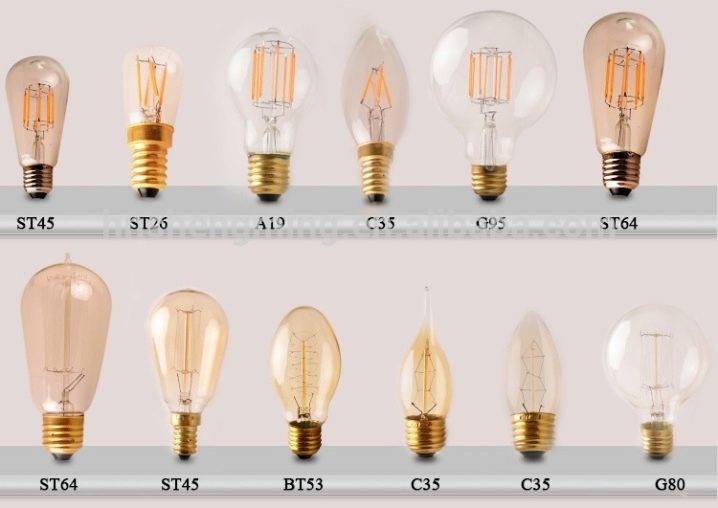
Lamp types
There are 5 basic types, differing in the type of foundation:
- screw,
- castle;
- special bases;
- Bi Pin bases;
- fluorescent pin bases.
Each of the basic types works in a different way, since their main function is to connect a light bulb to an electric voltage, and the technology for achieving it is different in each case.
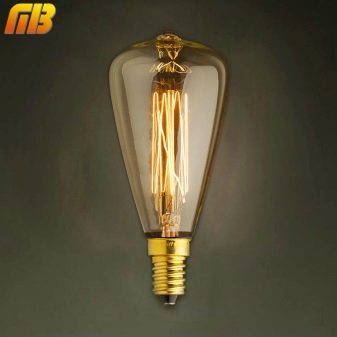
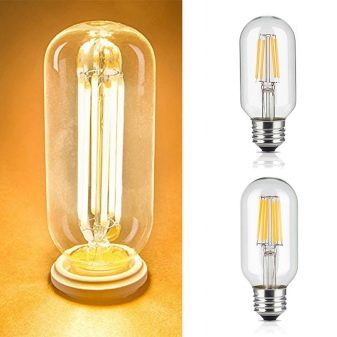
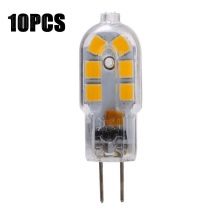
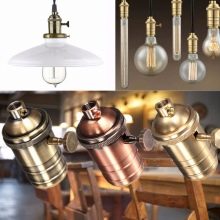

The two most popular types of bases are:
- Screw bases. Screw bases are the most common base.In a halogen screw lamp, two contact wires connect the filament to the base, where an electrical voltage is connected to the lamp. Screw bases are available in several sizes.
- Pin bases. The principle of operation of pin products is significantly different from screw products. While the screw base connects the light bulb to voltage using two contact wires connected to the metal base, there are two pins that protrude from the base and connect the fixture to voltage. Electricity can then be passed through the pins and into the light bulb to energize the filament and produce light.


Cords
Traditionally, such lighting fixtures were suspended from the ceiling using cords or ropes. You can recreate the right mood today - just choose the right cords and use them in floor lamps, sconces, chandeliers.
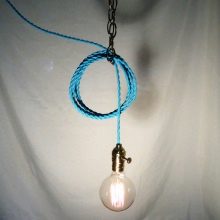
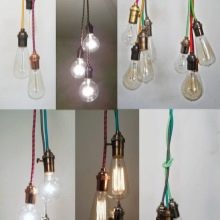

Unusual lighting is a striking detail of the interior of the house:
- Decorate the window with a garland of light bulbs, so you create a festive and cozy atmosphere, add warmth and light to any room.
- Replace your boring floor and reading lights with a vintage light source hanging from the ceiling.
- Transform your bathroom into a sophisticated spa with hanging lights and additional mirror lighting to create a relaxing ambience and adjust the light levels to suit your needs.
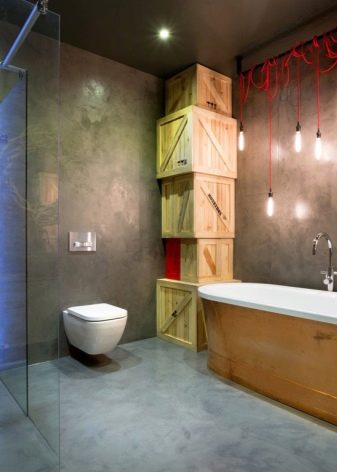
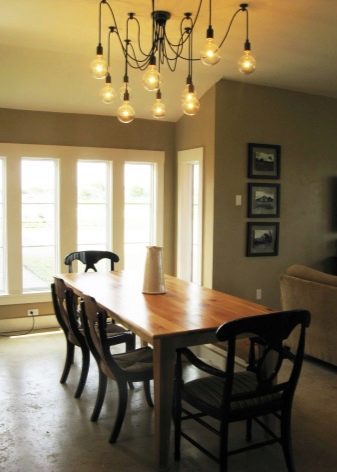
- Add glare: a scattering of light bulbs of different shapes and sizes hanging from the ceiling in different parts of the room looks advantageous.
- Choose large incandescent chandeliers and use several to illuminate one room in your home.
- Create a warm, festive mood in your home every day, the right light will help recreate the right atmosphere. Remember that lamps get hot, choose quality models and take precautions.

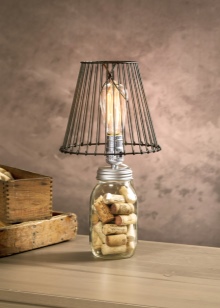
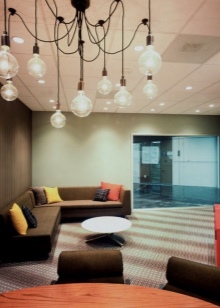
Style solutions
Transform your interior with unusual lighting:
- Loft style. The austere style with industrial elements is well complemented by vintage Edison lamps. Hang two cold light cords from the ceiling. Choose a chandelier without a shade with a variety of bulbs emitting warm light.
To get more light, combine several products at once, collecting them in bunches. So you get not only good lighting, but also an unusual minimalistic design.
The working area of the kitchen requires additional lighting. Edison lamps hanging from the ceiling will create the necessary level of illumination and enliven the interior.
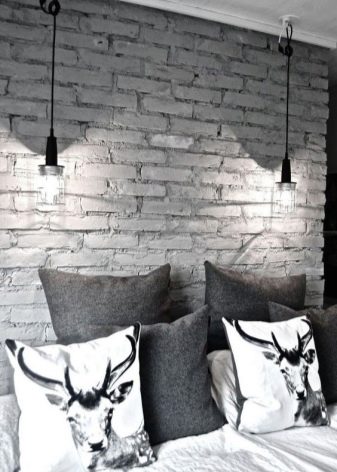
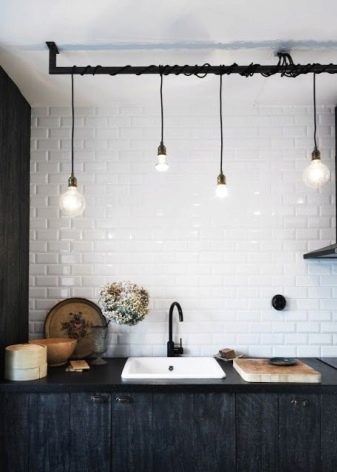
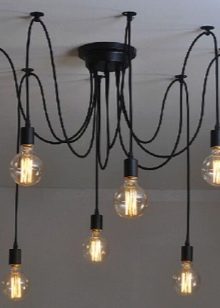

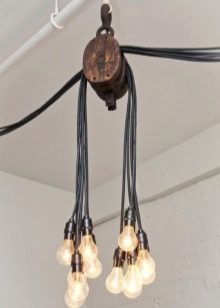
- Retro style. Vintage pieces will perfectly complement and accentuate the retro style in any room of your home. Combine modern wall sconces and vintage lamps. To enhance the effect, play with the shapes of the pieces. The highlight of the room will be an exquisite floor lamp imitating a vintage street lamp.
- Minimalistic style villages of the last century: a rope lamp and a classic light bulb.
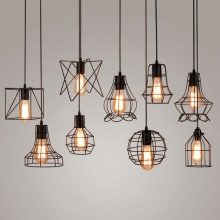
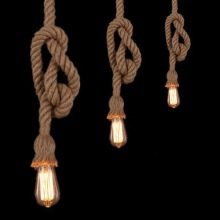
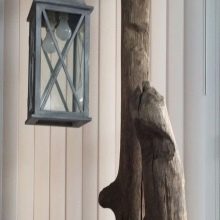
Operating rules
Several important recommendations:
- It is important to correctly identify and connect the hot and neutral wires. In fact, the lighting will work anyway, the problem is safety. Typically, power (voltage) is supplied through the tab at the base of the socket. The threaded socket is neutral. Therefore, when the switch is off, all hot parts are well protected. And when the switch is on, only the tab at the bottom of the socket is hot. But if the wiring is upside down and power goes to the threaded connector, it is always hot, the switch is on or off. There is a much greater potential for electrocution, especially when changing a light bulb.
- The situation is aggravated in old luminaires, when the cardboard insulating sleeve wears out, and the outer metal shell of the socket touches the threaded socket. If the threaded socket is hot, each metal part heats up.
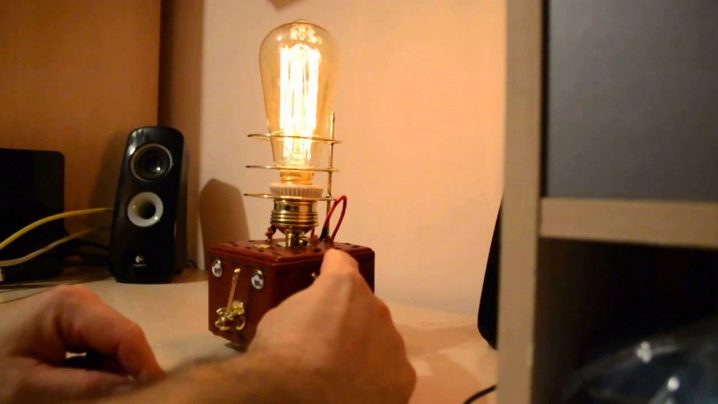
- Remember that when repairing lamps, the neutral wire in the cord is connected to the wide blade of the plug at one end and to a neutral screw (usually silver, but may have a different identification) at the other end.
- The hot path for electricity should go through the narrow prong of the plug on the wall outlet to the hot terminal on the switch and to the hot button at the base of the socket when the switch is on. The neutral path must be from the wide pin on the wall outlet, through the marked (insulated) wire, to the neutral terminal on the switch and to the threaded metal receptacle.
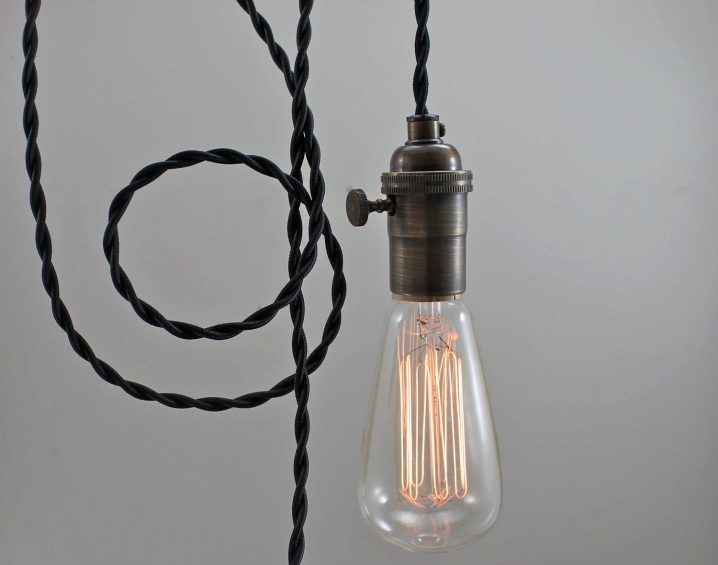
Beautiful design solutions in the interior of the apartment
Unlike modern designs, Edison bulbs, also called incandescent bulbs, have a simpler filament that is highly visible and wound in a variety of styles, making them ideal for decoration. These lamps imitate vintage light, reminiscent of the lighting of the 1880s. They are ideal for decorating and decorating interiors in loft, retro and many other styles.
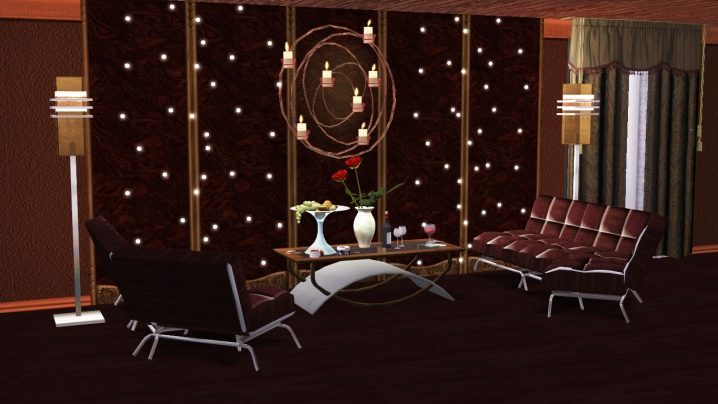
Variants of using vintage lamps. Fashionable retro lamps not only bring light to the home, but also decorate it. Due to their unusual style, these light sources have many uses.

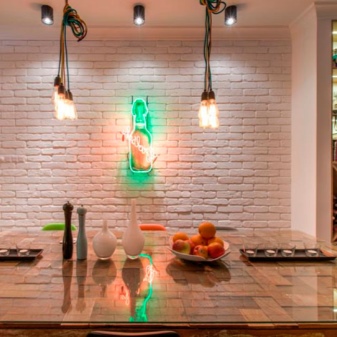
Pendant lights. Whether you're decorating a special event or your personal space, a series of simple hanging heads will transform your dining table and add a touch of flair to any room. To enhance the effect, alternate balls, pears, tubular and standard shaped bulbs.
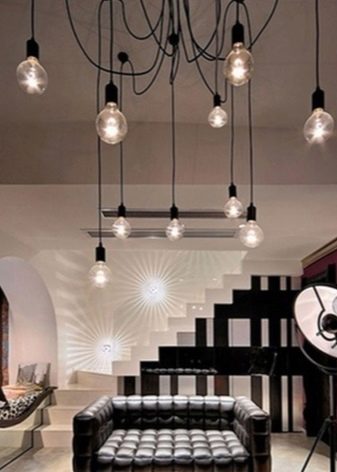

Garlands. Add a vibrant, quirky backdrop to your party or photo shoot by replacing the standard garlands with vintage-style lamps and hanging them on the wall.
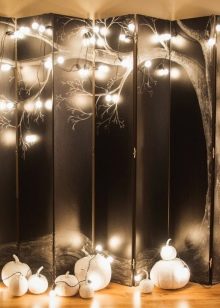

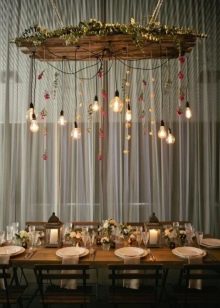
Transform the mirror. Place Edison bulbs around your mirror for a vintage Hollywood glam vibe. They have an ideal color rendering index of 100. This means they faithfully reproduce colors, so you will see the true color of your makeup. Try using ball shapes for a more authentic retro look.
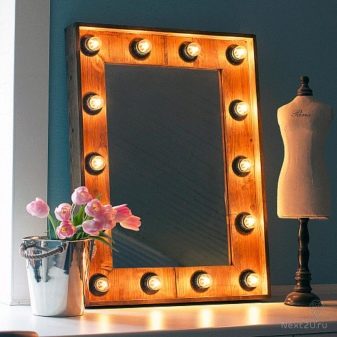

Chandelier. Replace the traditional bulbs in your chandelier with carbon filament bulbs to transform it into a quirky industrial piece.
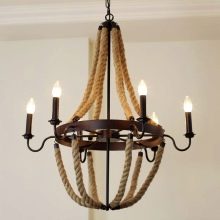

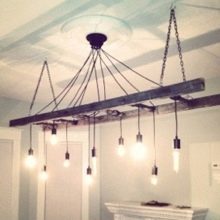
Souvenirs. Such an interior element serves as a wonderful gift and decoration and has an attractive appearance even with the lights off. To make your souvenir even more attractive, choose different shapes, such as elongated, spherical or pear-shaped.
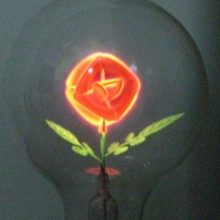
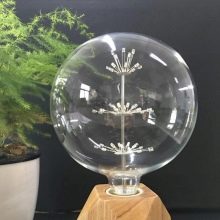

Postcards. These unconventional posters are another bold, unconventional way to use incandescent bulbs. You can use them as event signs by writing the guest's name directly on the lamp.

Outdoor event decoration. These light sources are the perfect decoration for your garden party and are a great alternative to traditional holiday decorations. You can simply enjoy their magnificent light all year round.
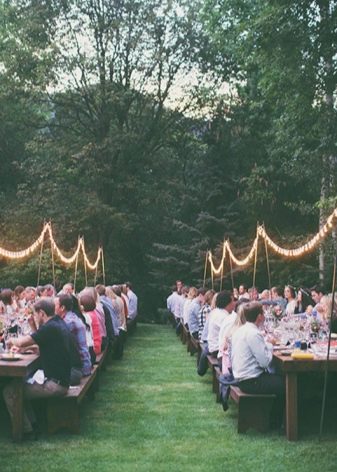

Sconce. Enhance the effect of these unusual loft-style sconces: just add an incandescent lamp to it. Such an accessory will decorate any interior, becoming a bright and memorable accent.
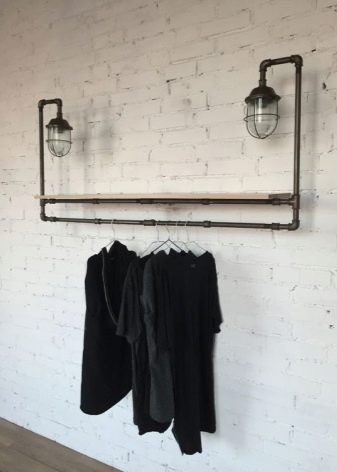
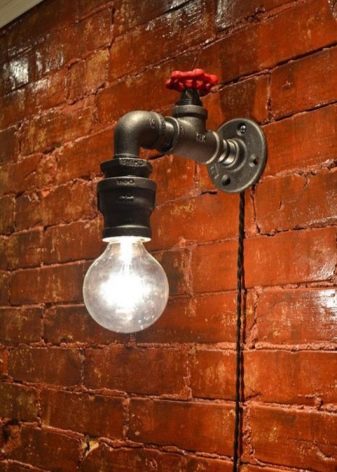
An interesting example of using Edison lamps in a homemade chandelier awaits you in the next video.













The comment was sent successfully.